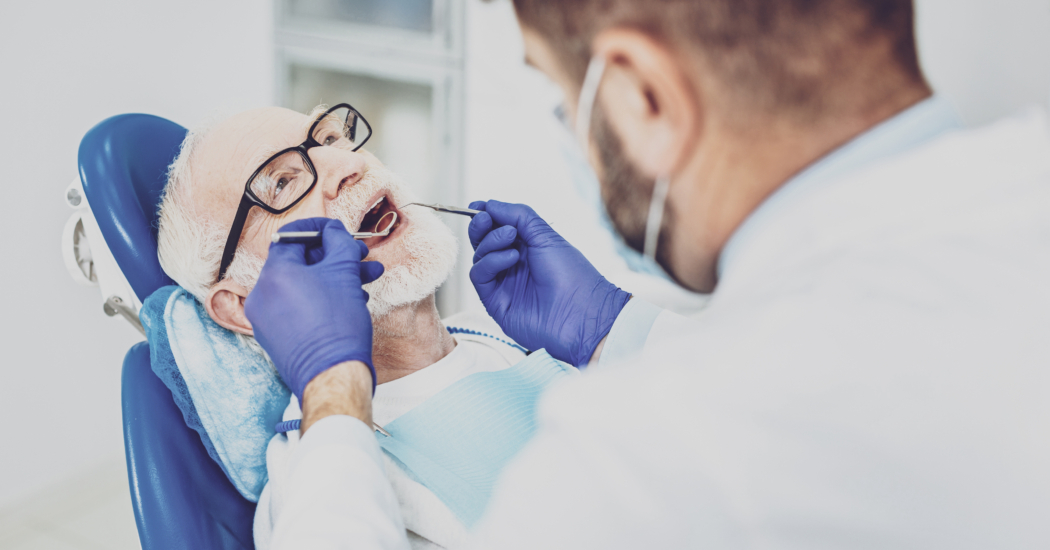
Dentist-patient relationship
Discover evidence-based strategies for better pain management, easier procedures and happier patients.
6 minute read
With the elderly population rising, it’s more important than ever to understand the unique needs of geriatric patients.

Thanks in large part to advances in medicine and healthcare, people are generally living longer than ever before. According to the United Nations World Population Prospects 2019 report, the global population of people over 60 is expected to reach 1.4 billion in 2030 — a 56% increase from 2015. In order to provide adequate care throughout the lifespan, it is essential that every dental professional takes steps to better understand the needs of this rapidly growing demographic.
Aging is associated with a number of changes to the oral cavity.
These physiological changes can interact with systemic, behavioral, lifestyle, and socioeconomic factors to increase the risk of oral health conditions in the elderly.
While the prevalence of edentulism varies widely by region, we have seen an overall decline in recent decades, particularly in developed nations. Retaining dentition can help to preserve nutrition, speech, and quality of life, but the presence of aged teeth presents challenges of its own.
The British Association for the Study of Community Dentistry (BASCD) notes that periodontal disease and dental caries are highly prevalent in the older UK population, especially in residential care settings. They add that 96% of over-65’s have exposed root surfaces due to the cumulative effects of periodontal disease, leaving them susceptible to root caries. Periodontal disease is highest in the 65-84 age group, with 60% showing at least one periodontal pocket of >4mm depth.
Xerostomia, or dry mouth, is common in old age, largely due to increased reliance on medications. The BASCD notes that dry mouth is the most common side effect of the 200 most-prescribed medications, and it increases the risk of other oral health conditions like mucositis, caries, and oral candidiasis.
Prostheses and restorations are common in older adults, partly due to the high prevalence of dental caries before the widespread use of fluoride toothpaste. While they help to preserve function, they can also increase the risk of periodontal disease and caries by impeding oral hygiene. There is also a greater risk of damage or failure in older restorations.
Dietary preferences in the elderly can be affected by oral health changes. For example, sarcopenia, mucositis, or tooth loss can lead the patient to favor softer foods that are typically high in fermentable carbohydrates, increasing caries and periodontal disease risk.
The World Health Organization (WHO) says that the most common health conditions experienced by the elderly include hearing loss, vision problems, musculoskeletal pain, arthritis, diabetes, depression, and dementia. Some conditions can impact the patient’s motivation to perform oral hygiene or limit their physical or cognitive ability to do so. Impaired glycemic management associated with diabetes can also increase the risk of periodontal disease, which can in turn make glycemic control more difficult to achieve.
Certain comorbidities can also complicate the administration of local anesthetic. For example, epinephrine is contraindicated in:
In addition to causing xerostomia, medications present challenges in geriatric care in the form of drug interactions. For example, epinephrine is known to interact with MAO inhibitors, tricyclic antidepressants, beta-blockers, and oral anti-diabetic drugs.
With increasing health concerns comes an increased reliance on medications. In the US 39% of older adults take at least five medications daily, and the Journal of the Canadian Dental Association estimates that older adults will account for 40% of all prescription medication use in the nation by 2040.
Certain age-related physiological changes can alter the pharmacokinetics of drugs commonly used in dentistry. Notable changes include:
The dental professional may need to alter the dosage of certain medications in order to achieve appropriate plasma concentration.
In elderly patients, the conservative use of epinephrine is advised. Articaine-based solutions marketed by Septodont* are available in two concentrations, allowing the clinician to minimize epinephrine dosage in higher-risk patients. They contain 4% articaine*, an amide-type anesthetic often favored in geriatric patients because it can also be metabolized extra-hepatically. Where epinephrine is contraindicated, a vasoconstrictor-free anesthetic like the mepivacaine-based 3% plain solution marketed by Septodont* is a suitable alternative.
For patients in their 50s, it is prudent to discuss the changes they can expect to see in the coming years, any specific risks they may face, and any preventative or restorative measures they can take now to maintain their oral health.
For patients at high risk of dental caries (e.g. those in residential care), the pre-emptive use of high-fluoride varnish is supported. Other risk management strategies include proactive treatment of dry mouth, the recommendation of sugar-free medications where possible, and more frequent recall of around three to four months. For patients with limited dexterity or other physical barriers, aids like electric toothbrushes, floss holders, water flossers or modified toothbrushes should be recommended.
Today’s older generation came of age at a time when the connection between oral and systemic diseases, like cardiovascular disease and diabetes, was not widely understood. Educating patients on this connection and the shared risk factors, like high sugar consumption, may motivate patients and their carers to maintain positive oral health and dietary habits. Dental professionals should also actively address misconceptions about aging and oral health (e.g. “it’s natural to lose your teeth as you age.”).
Given the high risk of comorbidities and polypharmacy in elderly patients, it is especially important to get a thorough picture of the patient’s medical history. Proactive liaison with the patient’s other care providers can ensure that all parties have a clear and consistent picture of the patient’s overall health and that all treatments are aligned.
Carers, which can include loved ones, in-home providers, or residential facility staff, are often undertrained and/or unequipped in oral healthcare. The BASCD reports significant gaps in oral health training and provision in elderly care facilities, a need likely to be even greater in informal or in-home care arrangements.
Dental professionals can help to bridge these gaps by proactively engaging with carer support groups, healthcare agencies, and residential or nursing facilities. Possible outreach methods include “coffee mornings”, training sessions, lectures, educational resources, policy reviews, on-site screenings, or community programs.
Personal independence can vary greatly among the elderly population. Mobility problems, lack of reliable transport, or costs associated with treatment can all present barriers to dental care access. Dental professionals can support patients by offering flexible payment options, signposting financial aid resources, or implementing mobile or community oral healthcare services.
Those with cognitive or sensory difficulties may find it difficult to make or remember appointments or may find attending an appointment to be a distressing experience due to sensory or communication difficulties. RDH Magazine offers an extensive guide to managing these barriers and providing effective treatment.
A recent study reported in the BMC Geriatrics Journal found that only 2.6% of dentists displayed good knowledge of geriatric dental care, and 30% considered their knowledge and experience insufficient in treating older adults with complex medical problems. In order to meet the needs of this growing population, dentists are strongly encouraged to invest in continuing education centered on geriatric dentistry.
The oral care needs of geriatric patients can be complex and varied. As this population grows, dentists can ensure that they provide the highest standard of care through careful attention to medical history, proactive multidisciplinary coordination, and the continuing education of patients, carers, and healthcare colleagues.
Sign up now and get an exclusive access to: